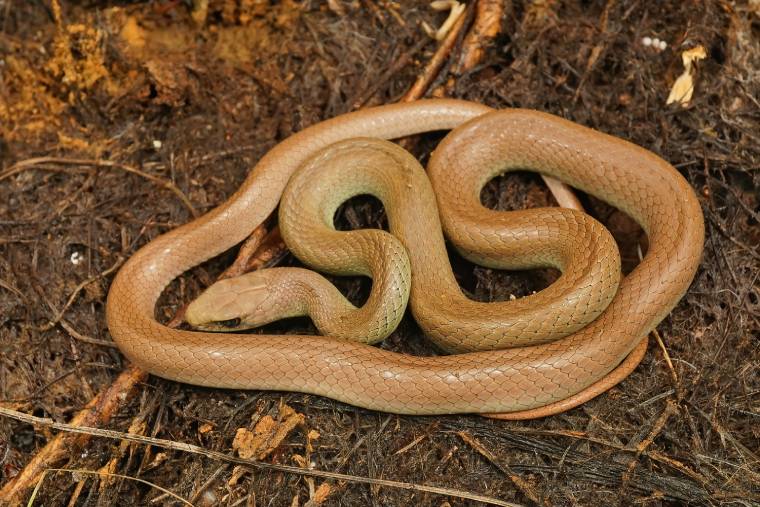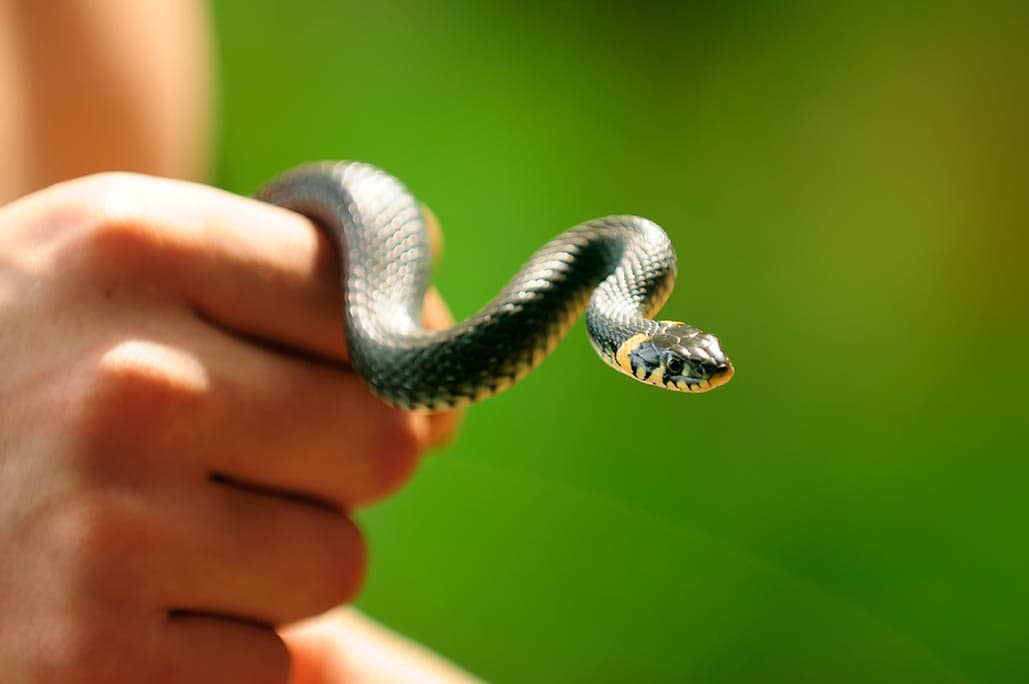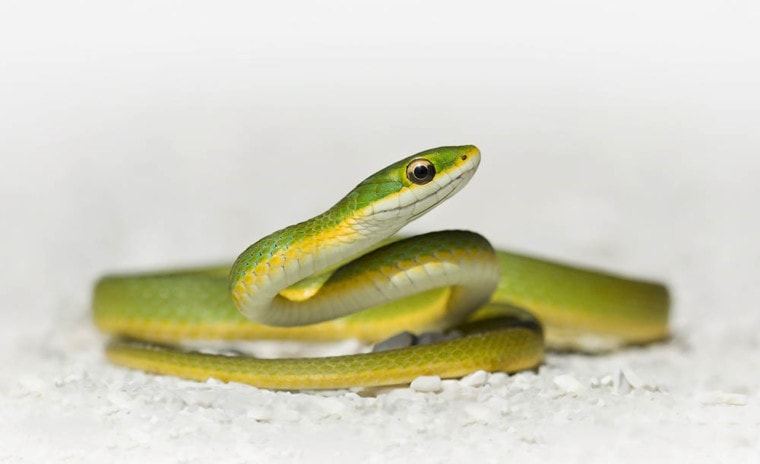
Snakes are a source of fear for some and fascination for others. No matter which side of the aisle you find yourself on, knowing about these creatures is crucial for everyone’s survival when living together.
If you are a fan of snakes and hope to bring one into your home as a pet, having in-depth knowledge about snakes without teeth is a great place to start. These snakes make good pets for people of all ages due to their inability to cause harm with their bites. Read on to learn more if you’re fascinated with snakes and ready to make one your next best friend.
Fangs vs. Teeth
There are over 3,000 species of snake in the world, with 600 of these considered venomous. Out of these numerous species, only around 200 are potentially dangerous. Even with the large number of harmful snakes slithering around in the world today, you’ll also find a completely harmless group. These snakes have no teeth or teeth considered too small to cause any harm.
Many species of snakes have fangs. For venomous snakes, this is how they emit their toxins and in most cases, claim their prey. Even those without fangs and venom can have rows of sharp teeth that can leave painful wounds on bite victims. This is often used as a defense mechanism when they’re feeling threatened.
The 7 Most Common Snakes Without Teeth
1. Dasypeltis
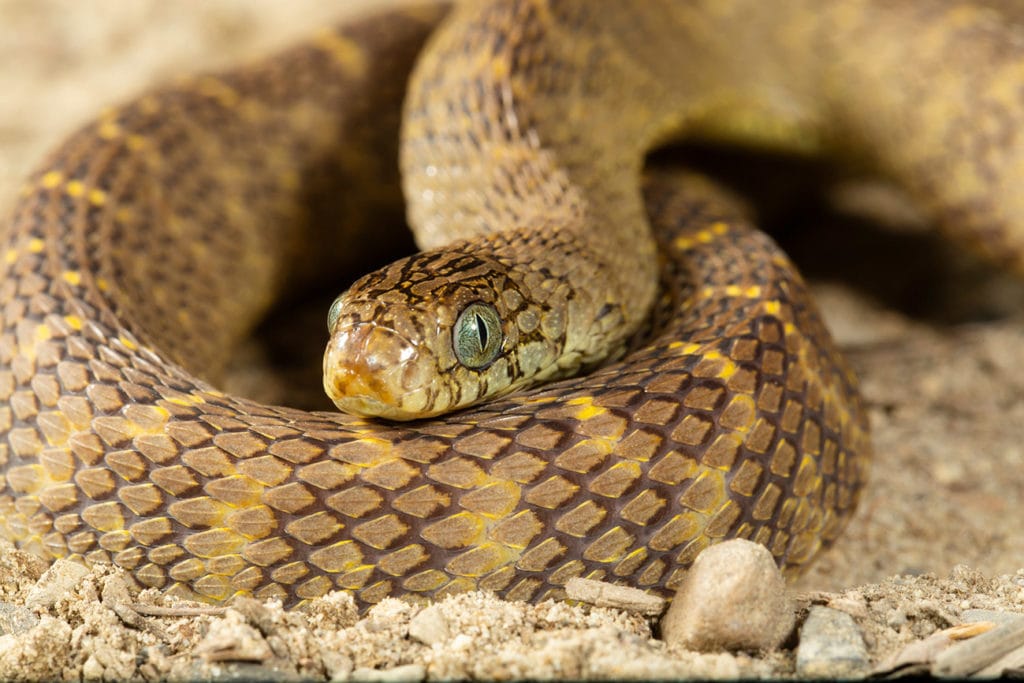
The Dasypeltis gansi is considered an egg-eating snake. Their diet consists of all forms of eggs, which makes sense, considering that they have no teeth with which to eat living prey. Protrusions inside their mouth make it possible to crack the eggs, while their unhinging jaw enables them to swallow eggs whole.
Having no real way to protect themselves, this snake will rub their scales together to make a noise similar to hissing. Their calm nature makes them ideal for life in captivity. Due to their inability to injure their owners with a bite, many people want these snakes as pets, making them very popular on the pet market.
2. Indian Egg-Eating Snake
The Indian egg-eating snake is quite similar to the Dasypeltis. This glossy black or brown snake has bluish-white flecks and a cream-colored stripe running the length of its body. This snake is a pro at navigating through vegetation and uses a striking S-pose to potentially incite fear in would-be attackers. Biting attackers is of no use to this snake due to their lack of teeth.
These snakes are considered quite rare and aren’t normally kept as pets. Indian egg-eating snakes cannot be found in normal pet stores. Although they’re sold on the exotic pet market, due to their need to flourish in the wild, it is recommended that these snakes be left to experienced snake handlers instead of novice snake owners.
3. Milk Snake
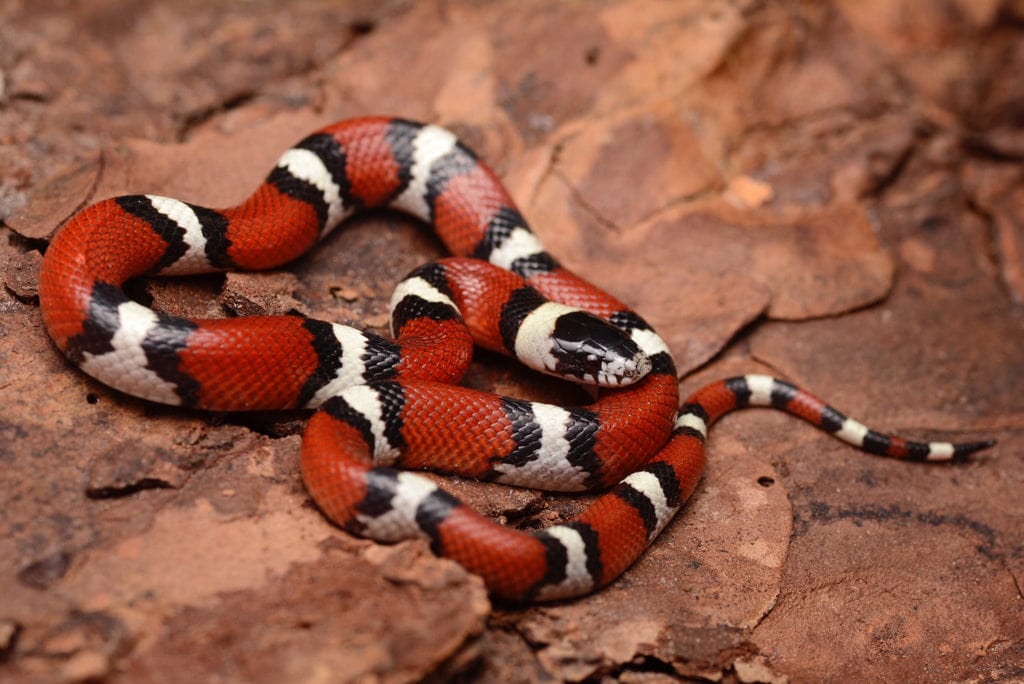
The milk snake is a popular snake due to their bright colors and great temperament. These snakes are beloved by pet owners and are often referred to as fan favorites that breed well in captivity.
Being a member of the kingsnake family may make people leery of this snake, but unlike their kin, these snakes do not pose any harm to humans. Milk snakes do not have fangs or noticeable teeth, which makes a bite from this snake completely harmless.
4. Green Snake
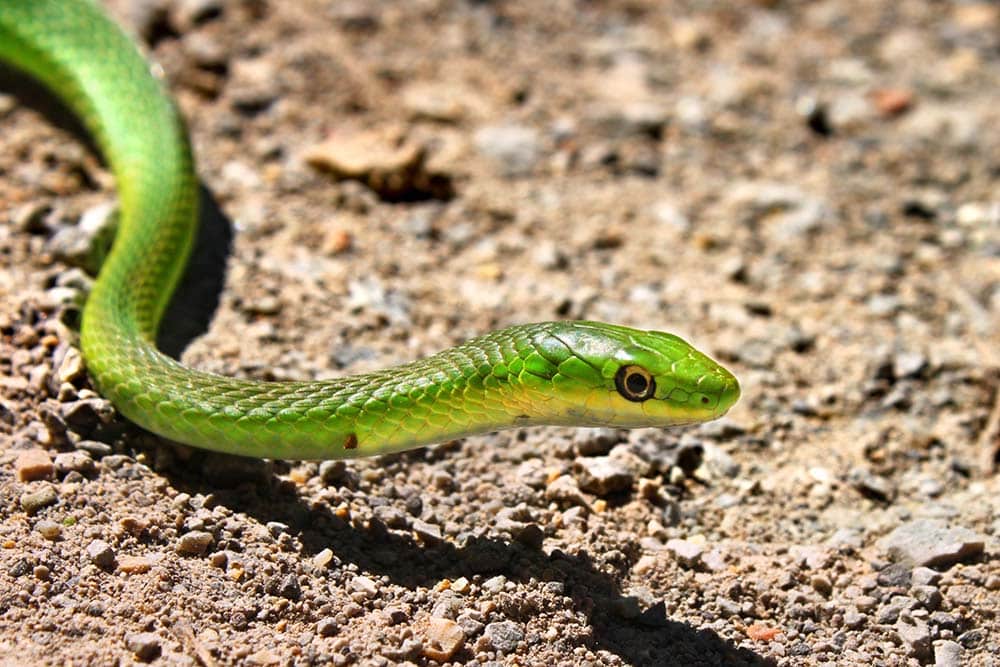
There are two common types of green snakes. The rough green snake, Opheodrys aestivus, thrives in the South Carolina and Georgia areas. They travel through vegetation quite easily and survive on a diet of insects and small worms. They are not considered completely toothless due to them having small, recurved teeth that make it possible for them to consume their food.
The smooth green snake, Opheodrys vernalis, is common in the Appalachian area. This snake is considered non-threatening and rarely bites. The shy natures of both the smooth and rough green snakes make them ideal for life in captivity and great for owners who are new to owning a pet snake.
5. Garter Snake
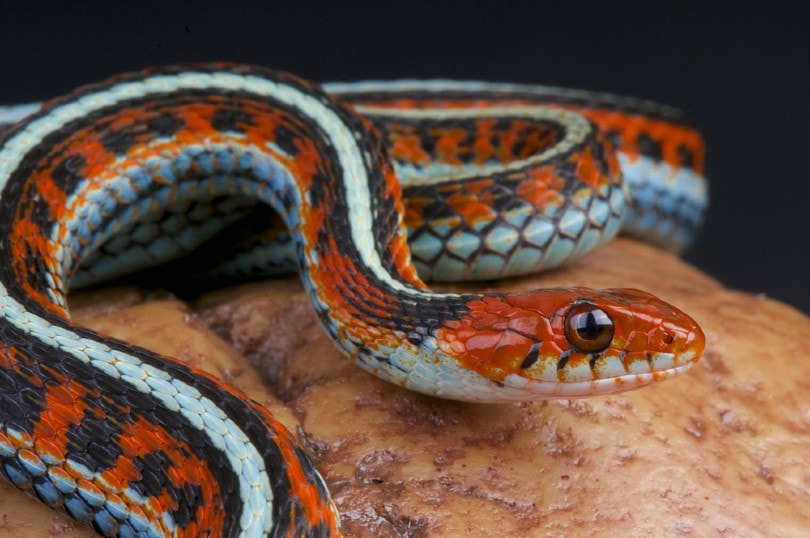
The garter snake is a relatively common snake found throughout Central and North America. These snakes have great versatility and can thrive in most areas without any issues. Garter snakes are considered quite docile but may coil and strike if threatened. Due to having extremely small teeth, such a strike is not considered truly dangerous to humans.
Pet owners are indecisive about their feelings about garter snakes as pets. These snakes do have venom, but it is considered non-lethal to humans. Still, this leaves certain pet owners wary of keeping them in their care. Garter snakes also emit musk or feces at times when being handled. Due to their challenges, it’s often better for seasoned snake owners to handle these snakes.
6. Water Snake

Water snakes are misunderstood snakes. Due to their tendency to dwell in the water, these snakes are often confused with the water moccasin or cottonmouth. The common water snake, however, is completely harmless and non-venomous and barely leaves a scratch when they bite.
The water snake is considered one of the best snakes to keep in your home as a pet. They are easy to care for, pose no threat to humans, and are even great for handling by kids. Mostly toothless, these snakes do have small fangs and will bite when aggravated. If you own a water snake, be aware of their preference for short handling periods and enjoyment of alone time.
7. Rat Snake

The rat snake does have teeth but finds their way onto this list due to the lack of damage that these teeth inflict. Due to their size, the teeth of the rat snake barely graze the skin. In most instances, if you’re bitten by a rat snake, it will appear like several scratches on the skin.
The rat snake is common in North America. Like other snakes, they can unhinge their jaws to eat their favorite prey, rats. Their small, needle-like teeth help them in the process by helping pull their prey in for digestion. As constrictors, rat snakes do not need teeth or fangs to kill their prey. Due to their easy care, rat snakes are favorite pets for snake enthusiasts.
Are Snakes Without Teeth the Best Pets?
Although finding a snake in the world without teeth is a bit difficult, they are out there. For people who are anxious about bringing a snake into their home, snakes without teeth are a great starting point. This is especially true if you are new to the world of snake ownership. Such snakes can often be considered the most docile and easiest to assimilate when it comes to human interaction.
- You may also be interested in: 10 Snakes Found in Kansas
Using Your Knowledge of Snakes Without Teeth
Now that you are aware of the most common snakes without teeth, living in the world with these creatures should become easier. By having a working knowledge of the differences between fangs and teeth, you’ll be more aware of which snakes pose a threat in the wild. No matter which type of snake you come in contact with, though, proceed with caution. Snakes are wild creatures and should be treated as such when approached in their natural environment.
- Learn more about: 10 Snakes Found in North Carolina
Featured Image Credit by: Kristian Bell, Shutterstock



